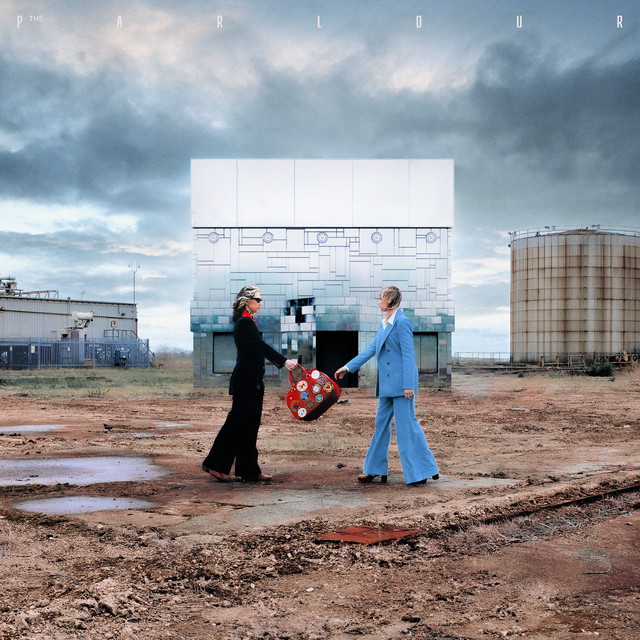
Picture Parlour The Parlour
Picture Parlour's The Parlour arrives as a confident debut that wears 1970s nostalgia and guitar-driven rock like a lived-in jacket, and critics largely agree it succeeds. Across four professional reviews the record earned an 80/100 consensus score, with reviewers praising its live-room energy, vocal charisma and storytelling while noting occasional lapses in momentum. For listeners asking "is The Parlour good?" the critical consensus suggests yes - a spirited collection with clear breakout moments.
Critics consistently point to a handful of standout tracks that define the record's appeal. “Cielo Drive” is repeatedly cited for its punchy opener energy, “Who’s There To Love Without You?” for its punk-like swagger and muscular drive, and “Ronnie's Note #3 (Lucky Man)” for stripped-back intimacy. Reviews also single out “Norwegian Wood” and “Neptune 66” as highlights that showcase the band’s range, from baroque and folk touches to full-throttle rock. Across reviews, themes of authenticity, coming-of-age narrative and a duality of charm and grit emerge, with critics noting how swagger and vulnerability sit side by side.
While professional reviews celebrate the record's live-wired grit, confident vocals and melodic hooks, some critics flag a few uneven stretches in pacing and the occasional retro pastiche that blunts momentum. Even so, the overall tone is admiring: reviewers consistently describe The Parlour as a promising debut with several essential, standout songs and the kind of storytelling and stage-ready swagger that suggest Picture Parlour are worth watching closely. Below, detailed reviews unpack how those best songs and moments cohere across the album.
Critics' Top Tracks
The standout songs that made critics take notice
Who’s There To Love Without You?
2 mentions
"‘Cielo Drive’ and ‘Who’s There To Love Without You?’ strut forward with knife-like precision"— New Musical Express (NME)
Ronnie's Note #3 (Lucky Man)
2 mentions
"‘Ronnie’s Note #3 (Lucky Man)’ strips it all back: an irresistable slice of wistful balladry"— Clash Music
Neptune 66
1 mention
"‘Neptune 66’ reaches dizzying heights with its thrashing instrumentals"— Clash Music
‘Cielo Drive’ and ‘Who’s There To Love Without You?’ strut forward with knife-like precision
Track Ratings
How critics rated each track, relative to this album (0-100). Only tracks that made critics feel something are rated.
Cielo Drive
24 Hr Open
Who’s There To Love Without You?
Used To Be Your Girlfriend
Neptune 66
Around The Bend
Talk About It
Ronnie's Note #3 (Lucky Man)
$4 Fantasy
Norwegian Wood
The Travelling Show
What Critics Are Saying
Deep insights from 4 critics who reviewed this album

Critic's Take
Picture Parlour's debut The Parlour announces itself with brio, and the best songs here crystallise that livewired energy. The superb Used To Be Your Girlfriend strips back the swagger to reveal deadpan intimacy, while punchy opener Cielo Drive and the muscular Who’s There To Love Without You? strut forward with knife-like precision. For listeners asking what the best songs on The Parlour are, these tracks - plus the ragged charm of Talk About It - are the record's undeniable highlights, rooted in gig-room grit and theatrical storytelling.
Key Points
-
The best song is "Used To Be Your Girlfriend" because it peels back swagger to reveal emotional deadpan that the reviewer calls superb.
-
The album's core strengths are its gig-room energy, theatrical storytelling, and confident, riff-driven rock revival sound.
Themes

Critic's Take
Picture Parlour's debut The Parlour is unapologetically theirs, and the record's best songs - notably Used To Be Your Girlfriend and Norwegian Wood - showcase Parlour's smoky vocals and Risi's intricate guitar work. The reviewer leans into the album's blend of Northern dancefloor swagger and gritty American dive-bar panache, praising how tracks like Neptune 66 erupt into thrashing highs while ballads such as Ronnie's Note #3 (Lucky Man) strip things back to wistful intimacy. The voice throughout is admiring and slightly cheeky, celebrating a debut that balances catharsis with charm and cements the duo's self-assured identity.
Key Points
-
Used To Be Your Girlfriend stands out for its central vocal hook and thematic embodiment of the album's remorseful nostalgia.
-
The album's core strengths are smoky vocals, intricate guitars, and a confident blend of gritty rock and wistful balladry.
Themes

Critic's Take
Picture Parlour make a striking claim with The Parlour, and the best songs show why. Cielo Drive explodes with rock n roll grit, while Who’s There To Love Without You? carries an almost punk-like swagger that marks it among the best tracks on the album. Elsewhere, quieter moments like Around The Bend and the acoustic-led Ronnie's Note #3 prove the band can balance intimacy with sheer momentum. The result is a thrilling debut where the best songs on The Parlour broadcast both variety and a singular, irresistible spark.
Key Points
-
The best song, Cielo Drive, sets the album's tone with explosive rock n roll energy and stretched vocals.
-
The album's core strengths are its genre-hopping variety and confident execution, blending rock, baroque, folk, and punk-like swagger.
Themes

Critic's Take
Picture Parlour sound like they’ve been ripped straight from the 1970s on The Parlour, and the best songs - notably Norwegian Wood and Talk About It - showcase Katherine Parlour’s husky rasp and the band’s uncanny knack for big, singable choruses. The record trades in familiar influences, yet tracks such as Cielo Drive and $4 Fantasy prove the group can make retro tropes feel immediate and alive. At times, momentum stumbles - the second half of Around The Bend meanders - but the overall swagger, melodic strength and conceptual richness make these the best tracks on The Parlour and point to a breakout ahead.
Key Points
-
‘Norwegian Wood’ is best for its mesmeric vocal delivery and soulful intent.
-
The album’s core strengths are vintage guitar-driven arrangements, charismatic vocals, and strong melodic hooks.